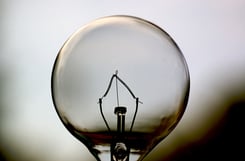

J&C Blog
Find all the latest marketing trends on the J&C Blog.

Find all the latest marketing trends on the J&C Blog.

 They are known as the digital generation, Generation Y, the Net Generation or, more popularly, Millennials. These digital natives are the inspiration behind countless articles.
They are known as the digital generation, Generation Y, the Net Generation or, more popularly, Millennials. These digital natives are the inspiration behind countless articles.
You can’t read a newspaper (dating myself here), watch a news segment or traipse around the Internet without seeing at least one article discussing the merits or deficiencies of the Millennial generation. Defined as those born between 1978 and 2000, this generation has a unique set of characteristics that make them stand out from previous groups.
What’s the most unusual, defining characteristic of this group? They’ve immersed their lives in the Internet and technology. Millennials grew up with computers, the Internet and the graphical user interface, which means they are more adept than other generations at understanding nuances of user navigation and adopting new operating systems.
If there’s a way to conduct life, and all of its various responsibilities and interactions online, Millennials typically choose to do so. This includes engagement with their utility.
Great for a utility in regard to bill pay. Online bill pay means reduced transaction costs. However, what if a utility wants to go beyond a service and pay mentality? What about utility engagement? What if the brand wishes to engage their customers, improve customer satisfaction levels or inspire an action like applying for a rebate or signing up for an energy-efficiency project?
Now we have a bigger obstacle.
Utilities are considered a low-involvement business, with people refraining from engaging with the business unless absolutely necessary. How does a utility market toward Millennials to effectively encourage engagement and action?
The Relationship between Utilities and Millennials
According to Kapost, strategic, high-quality content marketing tactics can boost customer engagement by 400% and new accounts acquisition by 300%. While utilities typically have a built-in customer base, engagement is still a key performance indicator and end goal.
 Less than one-quarter of customers trust their utility to inform them of actions they can take to optimize energy consumption, according to Accenture’s New Energy Consumer research.
Less than one-quarter of customers trust their utility to inform them of actions they can take to optimize energy consumption, according to Accenture’s New Energy Consumer research.
“It’s becoming clear that utilities are at a turning point when it comes to serving the new, tech-savvy consumer,” said Greg Guthridge, Accenture Energy Consumer Services managing director. “Satisfaction and trust are built on consistently delivering the basic customer experience, whether through digital or traditional channels. Once in place, utilities have incredible opportunities to create digitally powered value propositions that can deliver step-change consumer engagement.”
Do you know what that message says to me? Utilities and their engagement with their customers isn’t just related to using the Internet to talk to Millennials. Many utilities are ineffectively communicating online with customers of all ages. For the sake of this discussion, we’re going to focus on just Millennials, but remember, effectively communicating and engaging with customers is an evolving task and utilizing just one method, one medium, is greatly diminishing the customer experience and the reputation of the utility brand. Millennials are already known for being less concerned with brand loyalty than previous generations. They are also more distrustful of organizations and institutions, according to the Pew Research Center.
Utilities Have Opportunities to Improve Customer Utility Engagement and Satisfaction with Content Marketing
Accenture has reported that only 18% of utility customers feel satisfied by the experience their utility is offering them. Can you imagine? Far less than one quarter of customers feel as if their utility is satisfactorily providing them service? Or, is the problem more related to utilities ineffectively communicating the variety of programs and information available to customers?
My personal opinion is that often the programs and services customers are looking for exist, but they aren’t strategically and effectively being conveyed to the consumer. Thought leadership and information is abundant at a utility. Subject matter experts are everywhere! Yet, is the utility making those resources available in a way that resonates and assists the customer?
For Millennials, information is online. Millennials are looking for the answers to their problems online way before any other action. If Millennials pick up their phone, it’s because they are searching online for the answer and not to call their utility.
Content marketing allows a utility to get in front of customer issues and information requests. Content marketing allows a utility to reduce the burden on their call center. Content marketing allows a utility to actively develop an online reputation as a thought leader.
Two of the four opportunities customers indicated that utilities must improve on to boost customer satisfaction revolve around communication, according to the Accenture research.
A content marketing strategy aimed at prompting customer engagement supports the overall customer experience. During website visits, Millennials will find additional information about topics they are researching or that pique their interest, usually in the form of a blog. Once customers read a blog post, they experience targeted calls to action and banner ads that prompt them to engage with the brand by filling out a form for a new piece of content. The exchange of content for personal information is a currency that Millennials understand and respect. If the value of the content is there and offered at the right moment, Millennials will engage.
A survey from Newscred reports that nearly two-thirds of Millennials feel a direct correlation between content marketing and brand loyalty and engagement. Another study from Elite Daily claims that 58% of Millennials expect brands to publish content online before they ever make a purchase from that brand. Another 33% of Millennials cite blogs as their top media source, according to Millennial Branding. In other words, if utilities wish to engage with Millennials, the largest generation since the baby boomers, then content marketing is certainly a strategic and proven way to do so. After all, Millennials across the United States are starting to purchase homes. Wouldn’t it be best to ensure that these energy users feel positively about their utility and are engaging with the latest program?
Topics: Content Marketing, Digital Marketing
303 E Wacker Drive, Suite 2030
Chicago, IL 60601
Phone: 312-894-3000
Fax: 312-894-3005